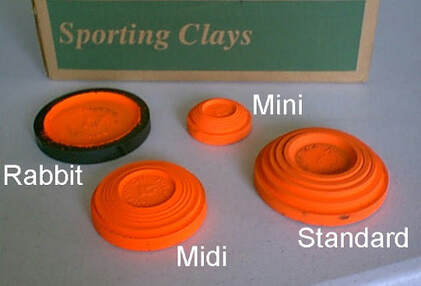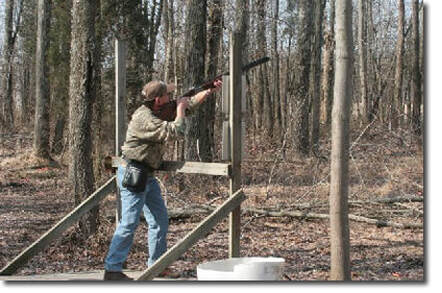There are a few types of target presentations; simultaneous pairs (called true pairs), report pairs (the second clay launched on the report of the shooter's gun, hence the name report pair), and following pairs which are less common today. Targets are thrown at different angles and speeds; sometimes across the shooter's view (crossers), towards the shooter (in-comers), away from the shooter (out-goers), or straight up in the air (often called "teals"). The shots are intended to simulate hunting for quail, grouse, pheasant, pigeon, or other game. Many courses have traps which throw targets from tall towers simulating high-flying ducks or geese. Some courses have targets that roll and bounce along the ground to simulate rabbits. There are also targets, called 'battues', that loop in the air making a challenging target.
The speed at which a trap throws a clay can also be controlled by the course setter, and many of the traps are made to be relocatable on the course. Therefore, the configuration of a sporting clays course (trap location, clay trajectory, and speed of the clay) can easily be changed, allowing various levels of difficulty and a multitude of layouts.
The speed at which a trap throws a clay can also be controlled by the course setter, and many of the traps are made to be relocatable on the course. Therefore, the configuration of a sporting clays course (trap location, clay trajectory, and speed of the clay) can easily be changed, allowing various levels of difficulty and a multitude of layouts.
NSCA 2024 Registered Shoot Dates - We look forward to seeing you!
- 2024 March 8-10 Shotgun Gear Challange Series Kickoff
- 2024 April 13-14 Derby Classic - Flyer
- 2024 June 1-2 June Bug - Flyer
- 2024 July 12-14 Stamler Firecracker - Flyer
- 2024 September 14-15 KYSCA Hosted Blood, Sweat, and Tears
- 2024 October 11-13 Shotgun Gear Challange Series
- 2024 November 2-3 Inventory Reduction Sale! - Flyer
- 2023 December 7-8 Chili Bowl - Flyer




